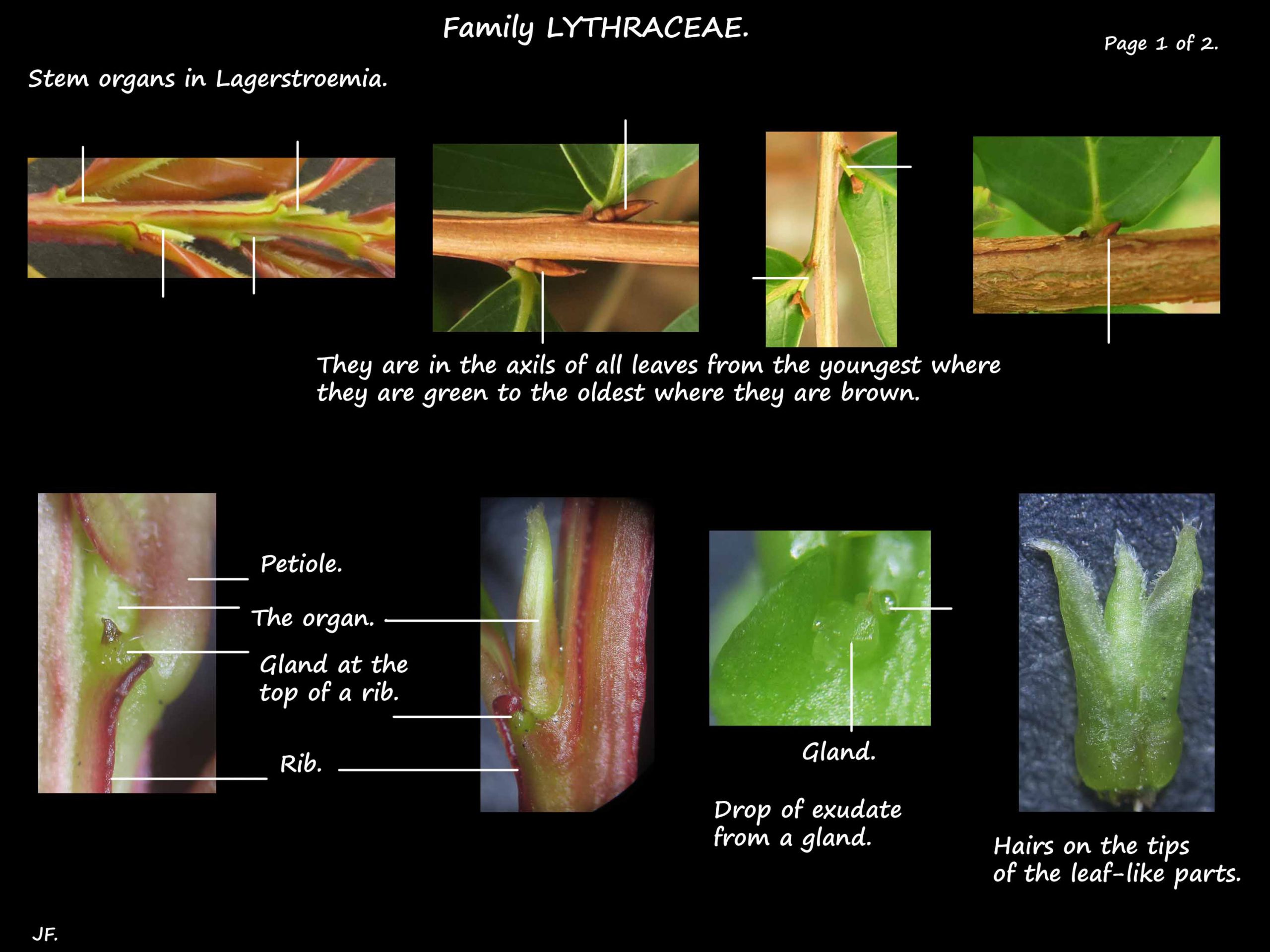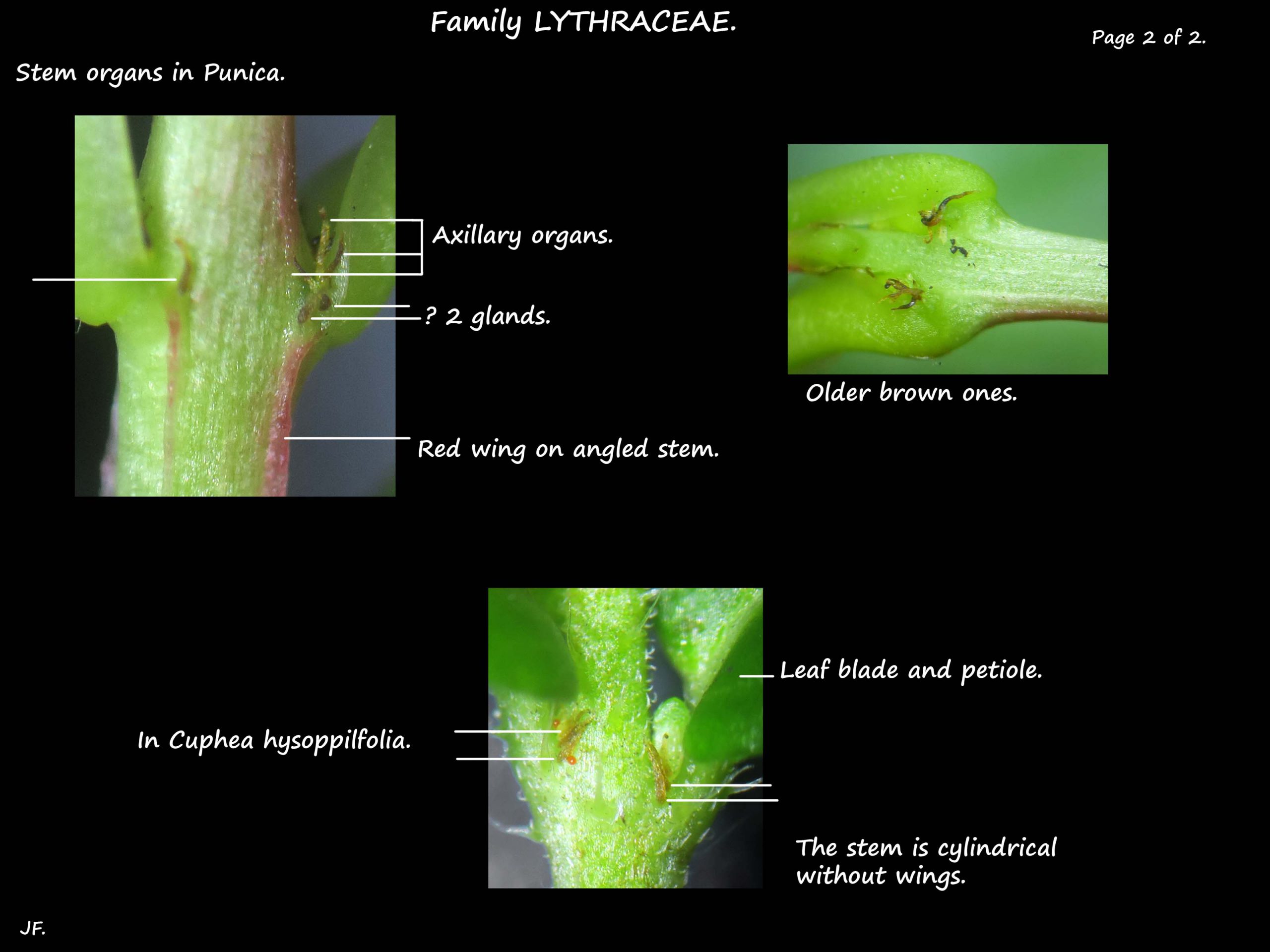Lythraceae.
There are around 31 genera (28 – 32) with 620 (550 – 650) species.
Australia has 8 (6 – 11) genera with around 25 species.
South east Queensland has 8 species in 5 genera.
Well known genera include Cuphea, Lagerstroemia and Punica.
Family characteristics include:
- Leaves entire, opposite to subopposite,
- persistent hypanthium that is usually ribbed and often coloured,
- crinkled petals inserted onto the rim of the hypanthium,
- stamens commonly twice as many as the petals and inserted deep in the hypanthium and
- fruit mostly capsules that open in various ways.
Most are herbs but there are also shrubs and trees.
Stems can be cylindrical or angled and the bark peels.
Leaf arrangement is variable from opposite or sub-opposite to sub-alternate.
Some are in whorls and they are rarely truly alternate.
They are simple, with smooth edges and with or without a petiole.
The blades can be obovate, oblong, ovate, elliptic or almost round.
The tip can be pointed, rounded or notched and it commonly has a mucro.
Stipules may be absent, vestigial or represented by a row of tiny hairs.
The terminal or axillary inflorescences can be a spike, a branched or unbranched
cluster or rarely a single flower.
Sometimes multiple, close inflorescences can resemble a single large one up to 50 cm long.
There are 2 small to medium bracts at the base of the inflorescence stalk.
The flowers are bisexual.
Hypanthium or calyx tube.
A hypanthium is a cup like or tubular structure around or above the ovary which is
formed by fusion of the bases of the sepals, petals and stamens.
A calyx tube is formed by fusion of the sepals only, either all or just the bases.
A true calyx tube cannot have the corolla or stamens attached.
Some use ‘floral tube’ instead of hypanthium but it is a vague term.
All 3 terms are used in descriptions of the Lythraceae but hypanthium is probably the correct one.
In Lythraceae the hypanthium is prominent, usually ribbed and often coloured.
It sometimes has a basal spur.
There are 4, 6, or 8 sepals that can be separate or with the bases fused.
When fused the tube may be tubular or bell-shaped with pointed lobes.
There may be tooth-like appendages between the bases of the sepal lobes.
The 4, 6 or 8 (0 – 16) petals are free and alternate with the sepals or sepal lobes.
They insert on the rim or upper inner surface of the hypanthium.
The petals are wrinkled and in some genera the bases are clawed.
There are commonly twice as many stamens as there are petals (8 – 16).
They are usually in 2 whorls and attached to the hypanthium, often low down.
The filaments in the whorls are often of different lengths.
The anthers are dorsifixed and open inwards via long slits.
The mostly superior ovary may or may not be on a stalk.
It has 2 to 4 (6) carpels that may be fused.
In each locule the 2 to numerous ovules have axile placentation.
There is a single style, often bent, holding a capitate stigma with papillae.
On some plants the flowers may have styles of different lengths.
Nectaries may be absent, an annular disc around the ovary, a gland or in the hypanthial spur.
The fruit are mostly a dry, dehiscent capsule that splits in various ways among the genera.
The usually numerous seeds are from 1 mm up to 3.5 cm long.
Seeds are winged in a few genera.
J.F.




